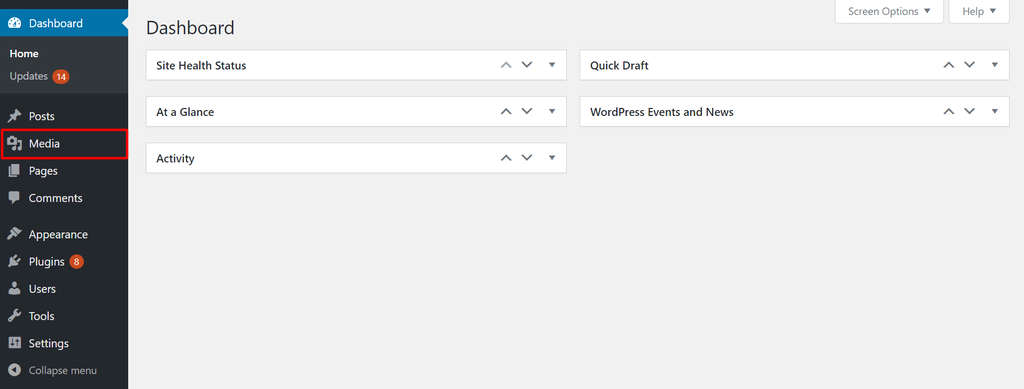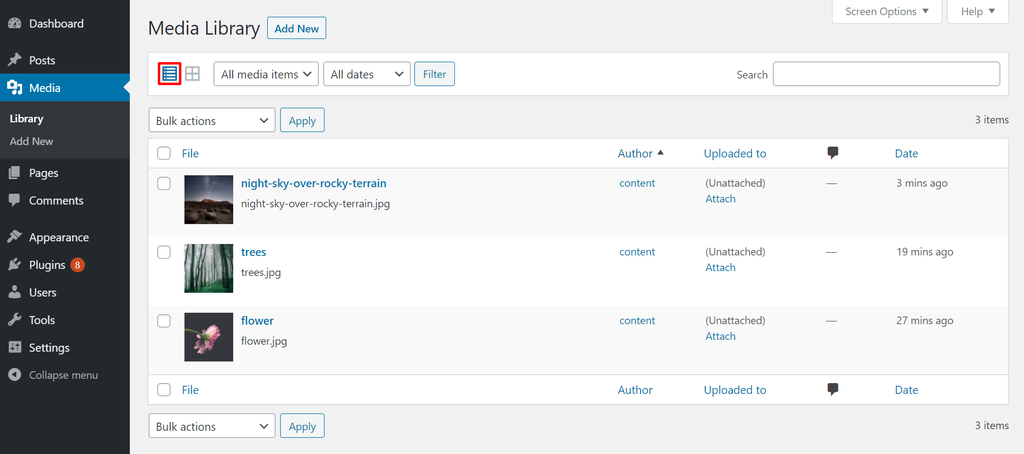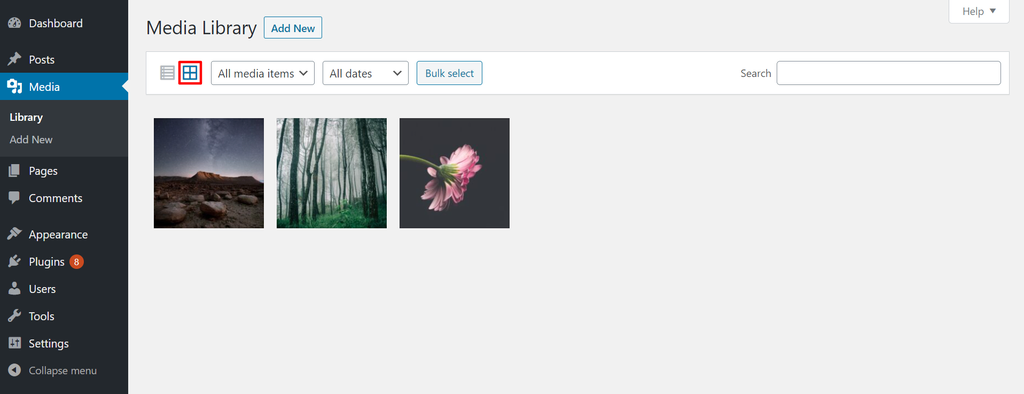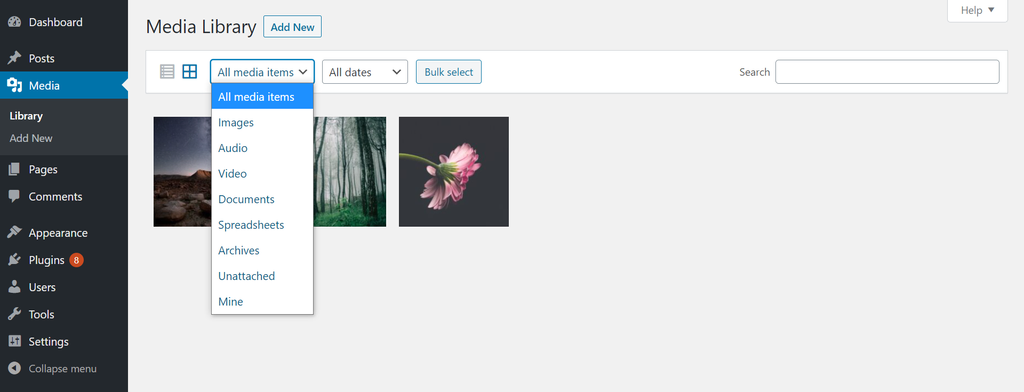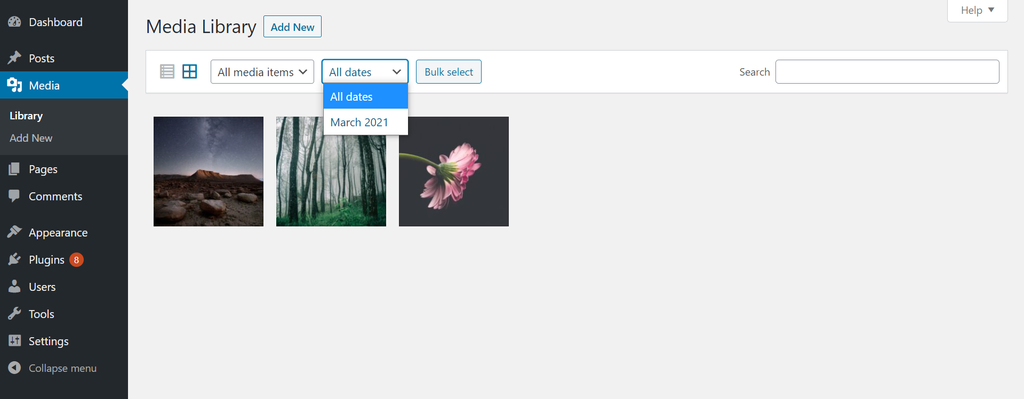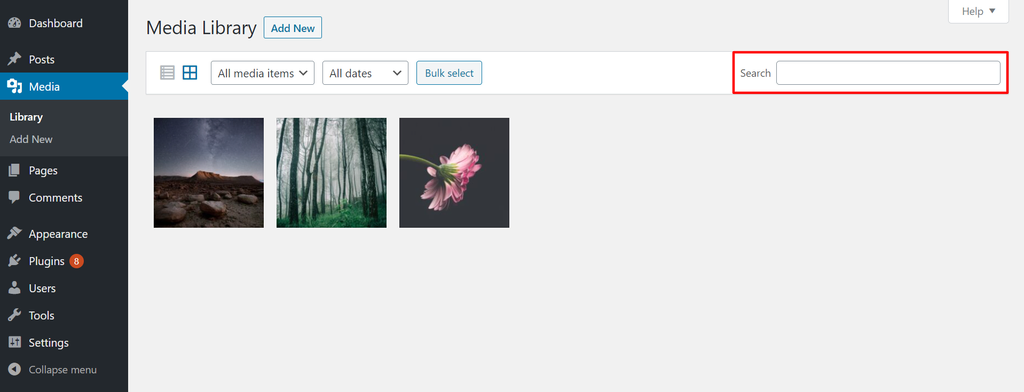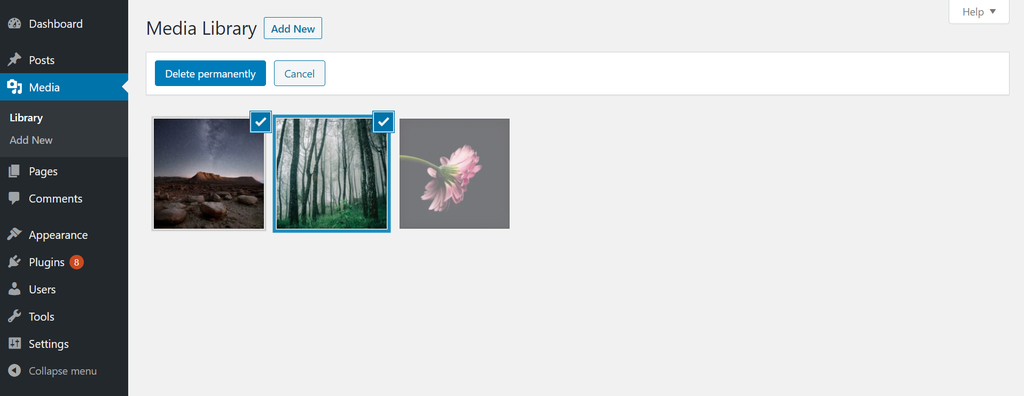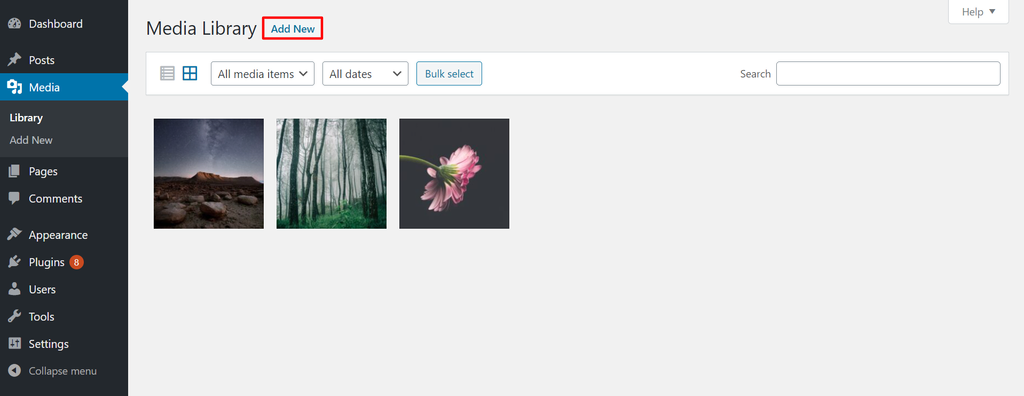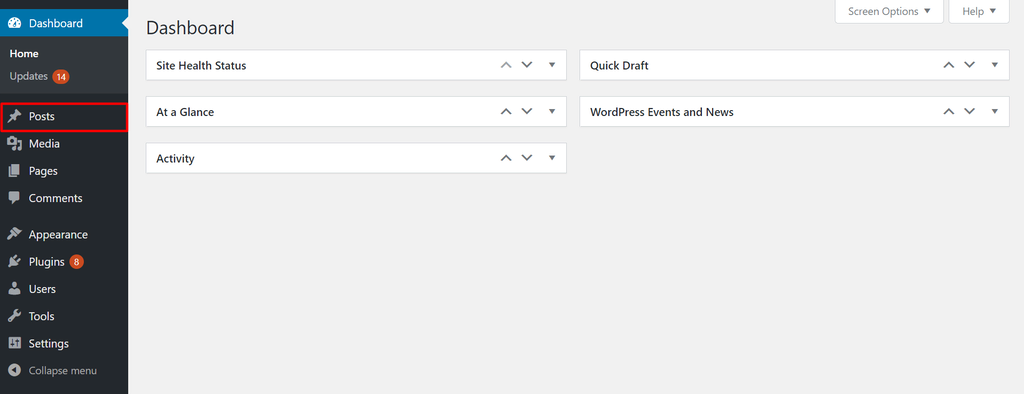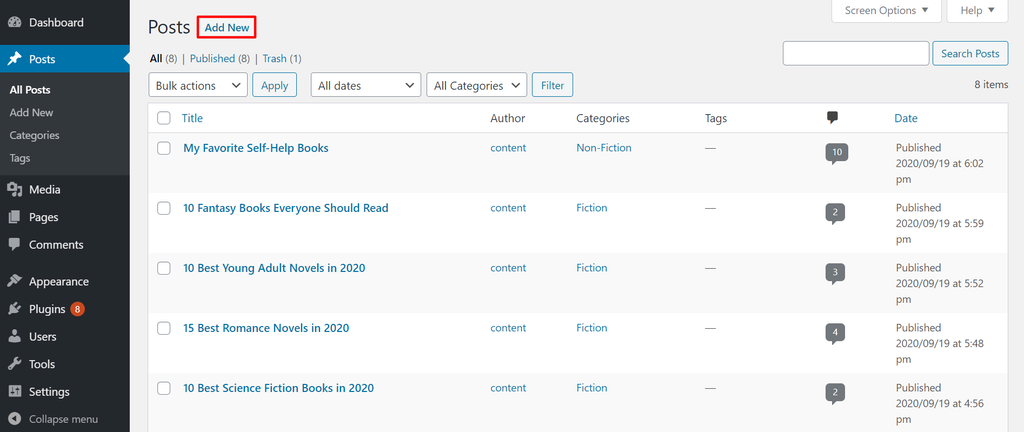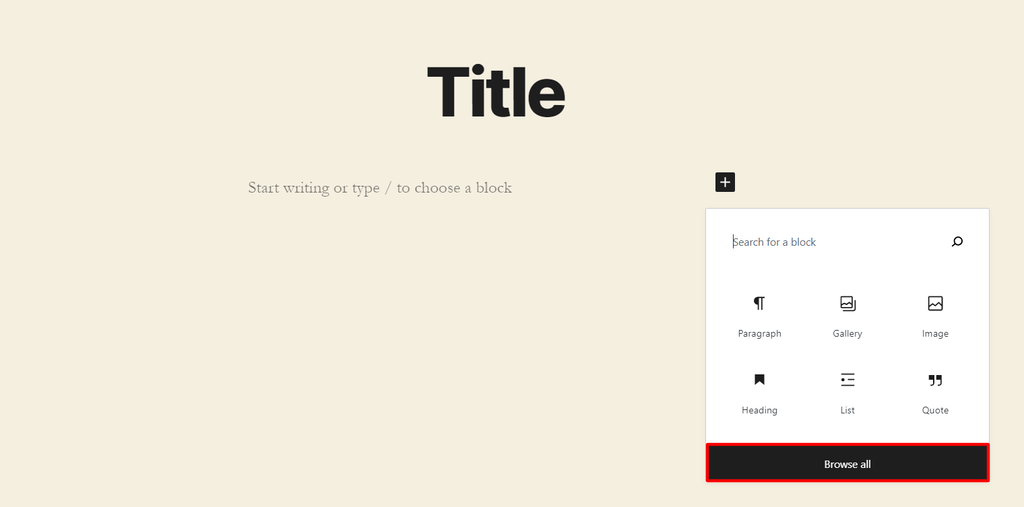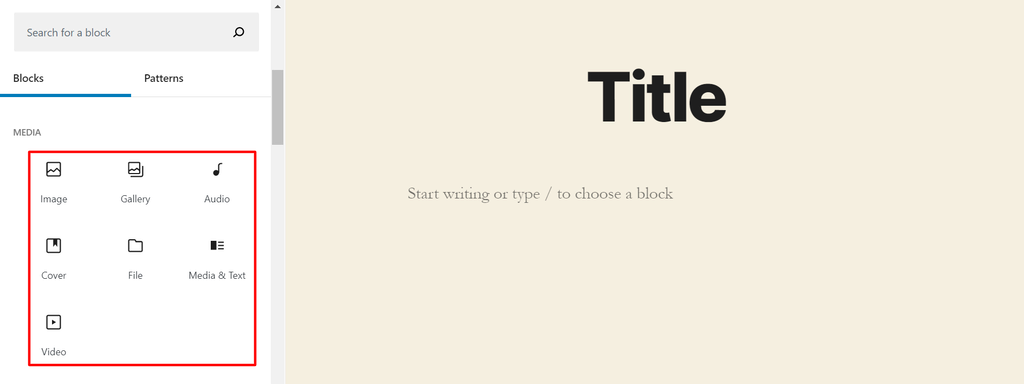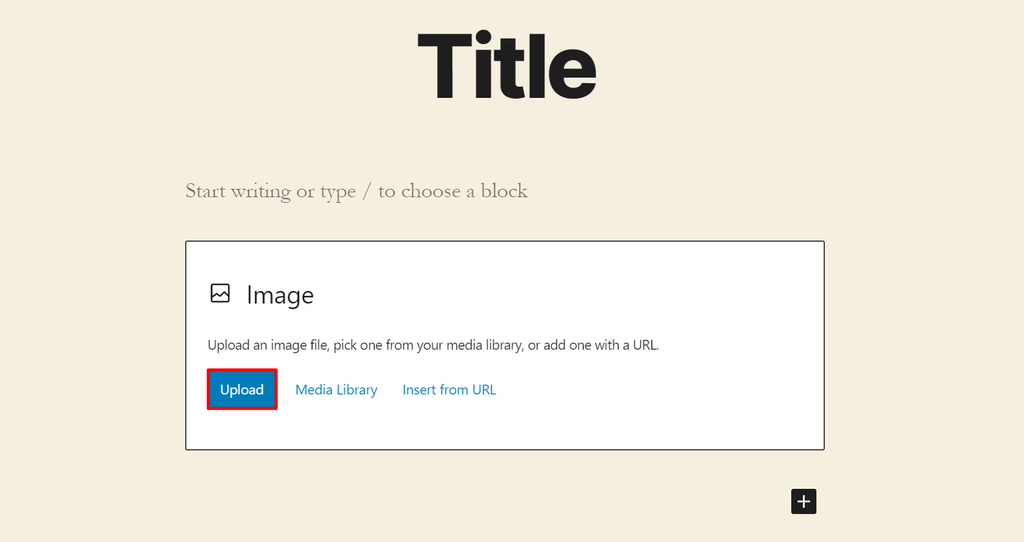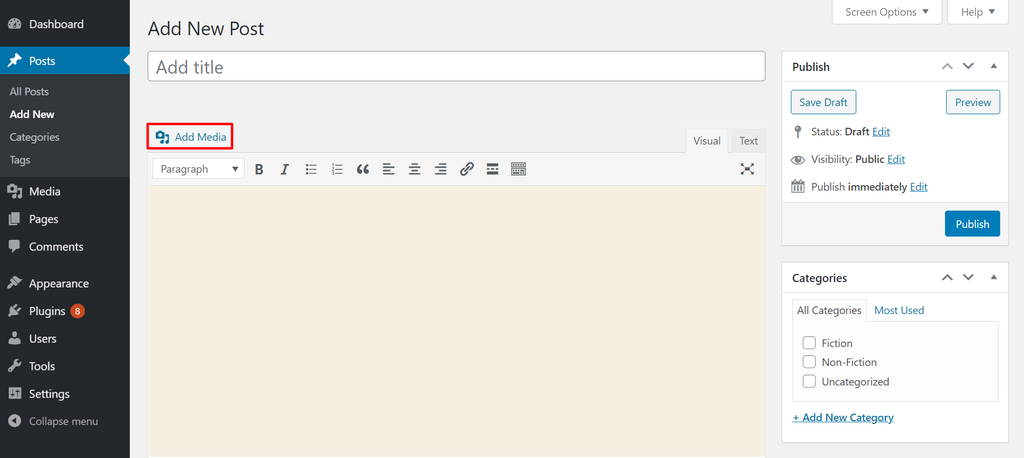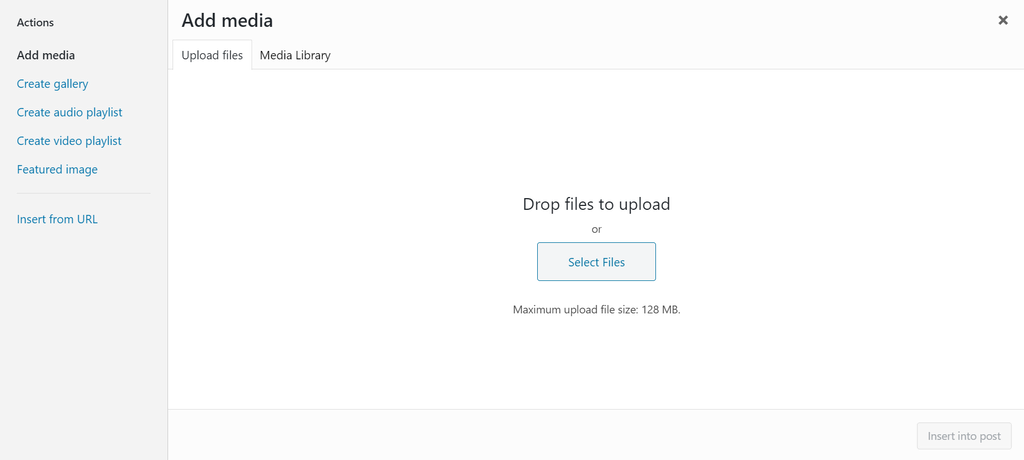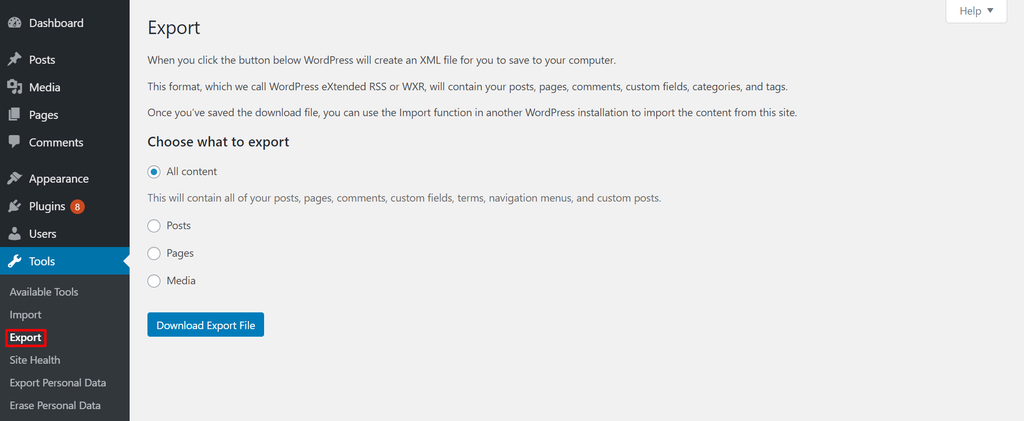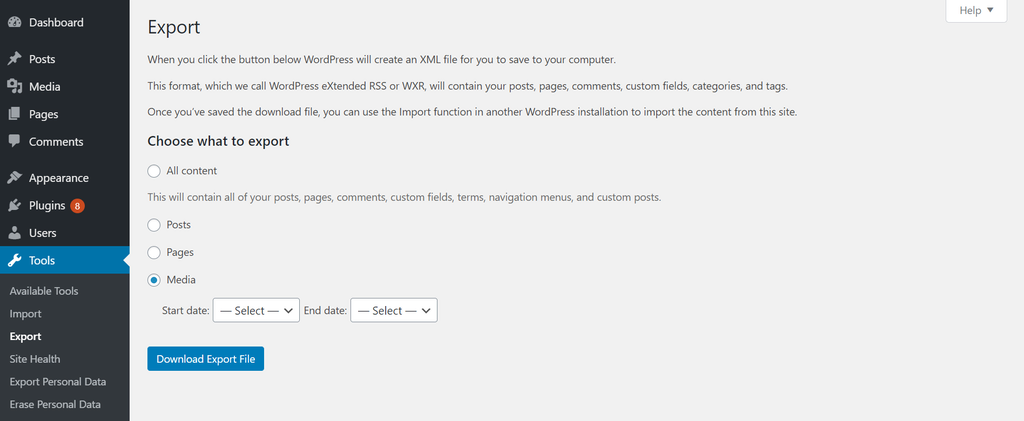WordPress Media Library Explained for Newbies: How to Upload + Best Plugins
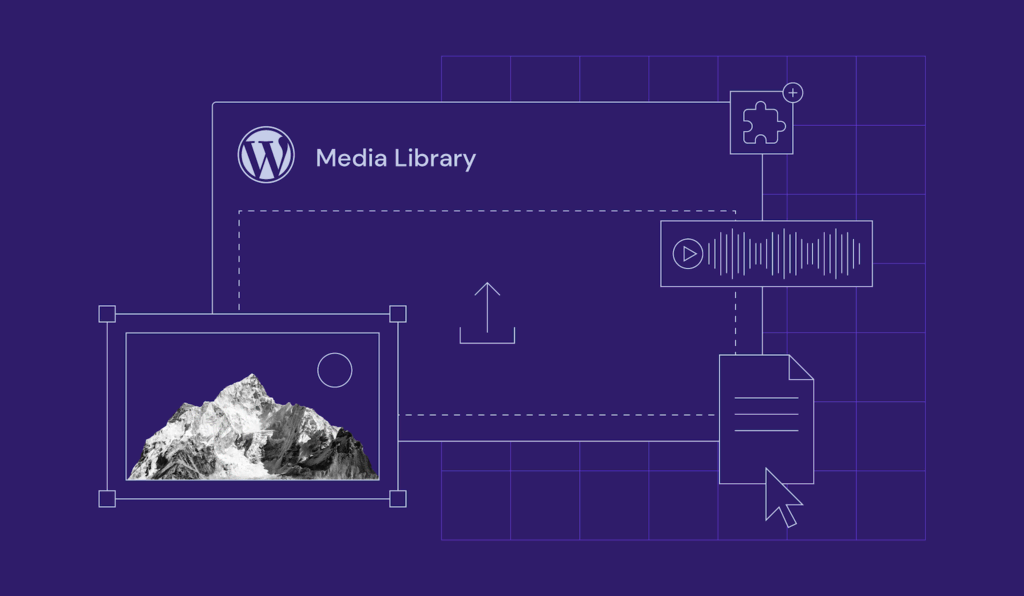
Images, videos, and other media files can make a website more user-friendly, breaking up the rows of text with some much-needed color. However, not all new WordPress users know how to add new media files to their WordPress blog, what WordPress Media Library is, or how it is related to their website.
If that is the case with you, don’t worry – this article will explain all you need to know about WordPress Media Library, how it works, and how to upload and download files from it. We’ll also recommend six plugins for organizing your library.
Download all in one WordPress cheat sheet
What Is WordPress Media Library?
WordPress Media Library is a directory that catalogs all media files uploaded to your site in one place.
You can access WordPress Media Library by clicking Media on the WordPress admin dashboard.
Upon accessing the Media Library page, you will see some options to browse files easily.
First, choose how you want to view the media items in your library. Click on the list icon to activate the media library list view.
Another option is to view the media files in grid view by clicking on the grid icon.
There is a drop-down menu to filter the media files by media type to the list and grid icons’ right. It shows all media items by default.
Next to the media item filter, there is another drop-down menu to filter the media files by their upload dates. The default settings show the media items from All dates.
If you know the name of a specific media file you are looking for, simply type the name into the search bar on the screen’s right side.
When using the grid view, the Bulk select button lets you select multiple media files and delete them at once.
WordPress supports the following formats of media types:
- Audio files, ending .m4a, .mp3, .ogg, and .wav.
- Image file formats, ending .gif, .ico, .jpeg, .jpg, and .png.
- Videos, ending .3g2, .3gp, .avi, .m4v, .mov, .mp4, .mpg, .ogv, and .wmv.
- Word documents, ending .doc and .docx.
- Excel spreadsheets, ending .xls or .xlsx.
- Powerpoint presentations, ending .pps, .ppsx, .ppt, and .pptx.
- Adobe Photoshop documents, ending .psd.
- PDFs, ending .pdf.
How to Upload Media Files to WordPress?
Let us walk you through several easy methods to upload new media files to your WordPress Media Library.
Upload Media Files via WordPress Admin Dashboard
To upload new media items through your WordPress dashboard, follow these steps:
- Click Media on your WordPress admin sidebar menu.
- Click the Add New button at the top of the screen.
- Upload your files by dragging and dropping them into the box or click on the Select Files button. Make sure the file size doesn’t exceed the limit.
Upload Media Files via WordPress Gutenberg Editor
If you prefer uploading your files through WordPress’s Gutenberg block editor, follow these instructions:
- Click Posts on your WordPress admin dashboard navigation bar.
- Click the Add New button at the top of the screen.
- Click under the title and press the Plus button, which will appear. You will see the types of blocks to add. To access all types of blocks, click the Browse all button.
- Scroll down the block library on the left side of the screen to find the Media section. Choose the type of media you want to upload. For this tutorial, we’ll choose Image.
Pro Tip
Gutenberg blocks are a great way to easily customize your page. For more blocks, feel free to check out our list of the best WordPress block plugins.
- After the block appears, click the Upload button to upload your media file.
Upload Media Files via WordPress Classic Editor
If you are more comfortable using the classic editor to create posts on your WordPress site, you can revert to the classic editor using the official Classic Editor plugin.
Make sure to install the plugin and activate it before you follow the guide below:
- Follow steps one and two from the previous guide on uploading media files using the Gutenberg editor.
- Click the Add Media button located under the title bar.
- Drag and drop the files you want to upload from your computer to the Add media pop-up window or click the Select files button.
WordPress Image Upload Errors
Uploading files to the WordPress library doesn’t always go smoothly.
You may run into errors such as the HTTP error when uploading images, the Upload: Failed to Write File to Disk error, or your WordPress Media Library failing to load.
There’s no need to worry, however, as you can solve these problems easily:
- For the HTTP error, wait for a few minutes before re-uploading your media file. If the problem is not fixed, your WordPress session may have expired. Log out and log back into WordPress.
- For Upload: Failed to Write File to Disk error, make sure permissions are correct. The file permissions are adjustable via an FTP client, the control panel provided by your web hosting provider, or SSH.
- When WordPress Media Library fails to load, it usually means there is a problem with your plugins or theme. Switch to a default WordPress theme, deactivate all of your plugins, and see if the problem persists. If WordPress Media Library loads properly afterward, don’t forget to fix the problem with your plugins or theme permanently. Try contacting the plugin or theme developer for more information.
How to Download Media Files From WordPress Media Library?
To download media files from the WordPress library, follow the steps below:
- On your WordPress admin dashboard, click Tools on the navigation menu and select Export from the tools list.
- Select the Media radio button. Next, choose the start and end date to download the media files you uploaded during that specific time frame. Finally, click the Download Export File button.
How To Edit Images on WordPress?
WordPress has some useful built-in image-editing tools.
However, keep in mind that these tools are quite limited compared to graphic design software, such as Adobe Photoshop.
To find the image editor, simply select the file you want on WordPress Media Library. The Attachment details window will pop up. Click the Edit Image button under the media file.
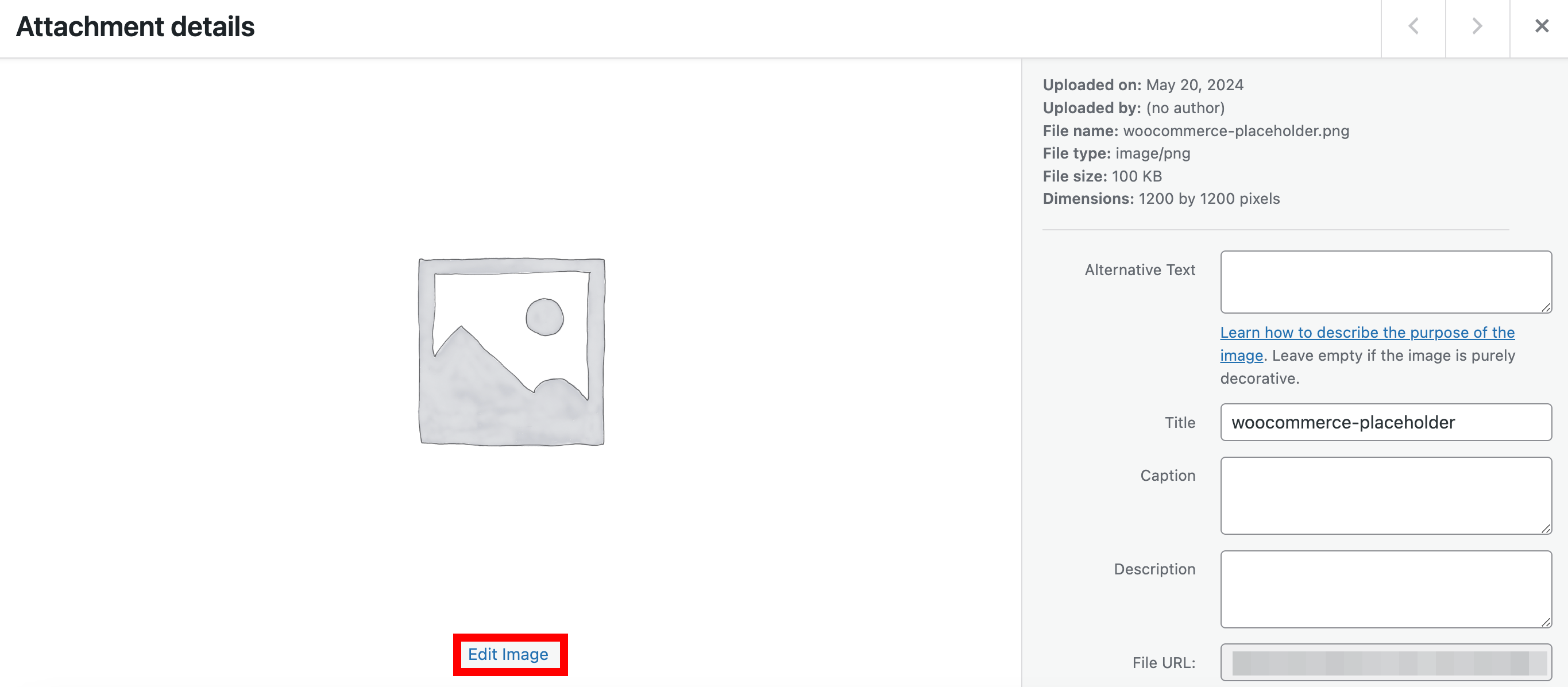
The WordPress image editor has several tools. First, we’ll focus on the three tools found above the image – crop, scale, and rotate:
- The Crop tool cuts images. To crop an image, click the Crop button. Adjust the cropping frame to the size you want, then click the Apply Crop button.
- The Scale button lets you change the dimensions of your image. Clicking on the Scale button at the top lets you change the image dimensions in pixels. Modify either the height or width and the other field will adjust accordingly. Keep in mind that images can only be scaled down.

- The Image Rotation tool lets you rotate and flip the image. Clicking on the Image Rotation button will provide you with the options to rotate it to the left, to the right, upside down or flip it.
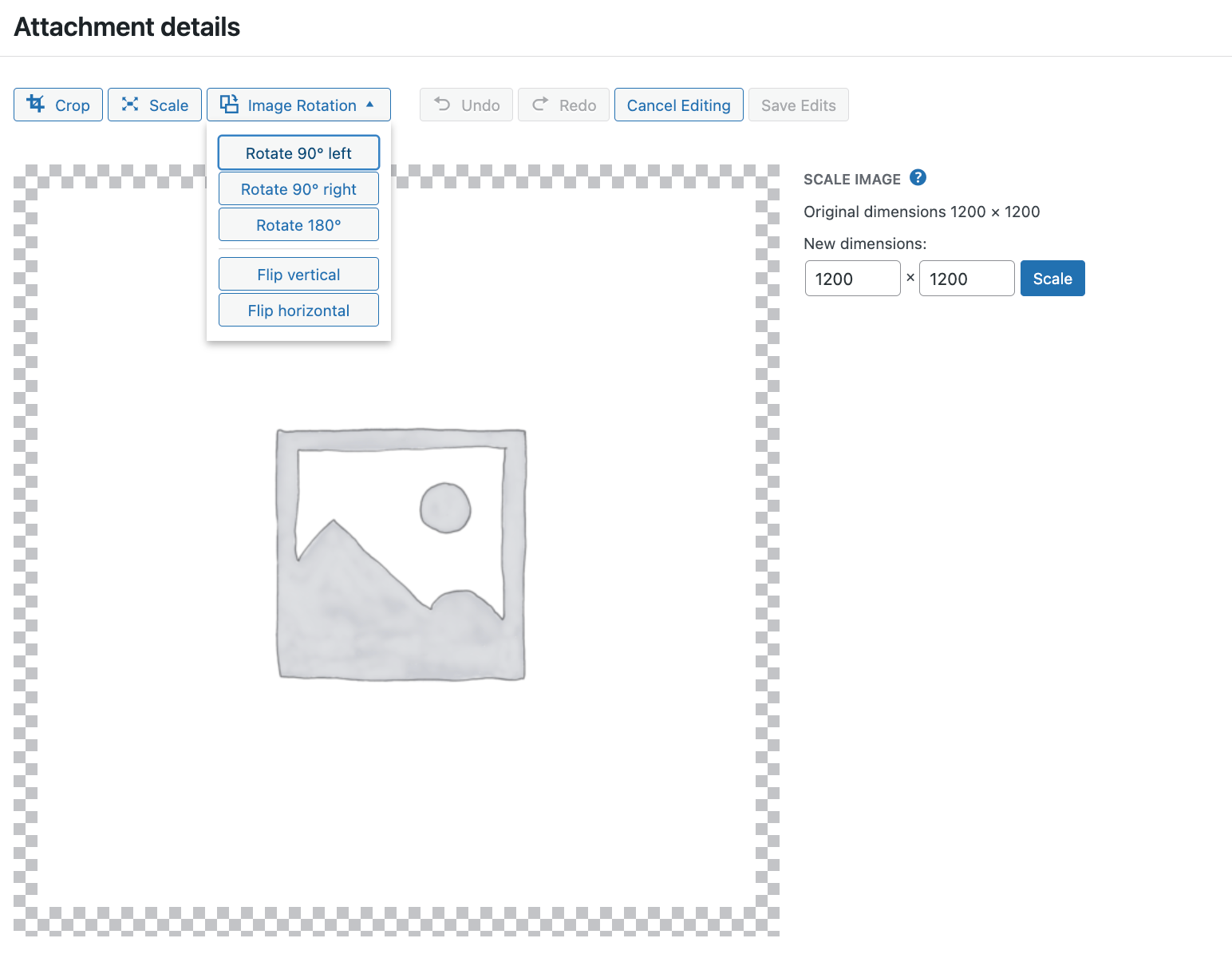
6 Plugins to Organize Your WordPress Media Files
The longer you use your WordPress Media Library, the more media files you will upload. As the number of media items in your library increases, it can get challenging to keep track.
Unfortunately, the built-in media management tools provided by WordPress Media Library are fairly limited, making for a bad user experience in the long run.
However, installing the appropriate plugins can provide you with various tools to better organize your media files.
We have compiled a list of the best WordPress Media Library management plugins for your consideration.
1. WordPress Media Library Folders

Plugin Stats:
- Downloads: 10,000+
- Rating: 4.3/5
- Notable Features: Thumbnail image regeneration, search engine optimization, FTP syncing
- Price: Freemium
WordPress Media Library Folders is a helpful plugin for creating, organizing, and labeling folders within your media library.
Its features include:
- Thumbnail image regeneration. This regenerates thumbnails for the purpose of changing the dimensions of their uploaded version.
- Search engine optimization. When the SEO settings are activated, it automatically adds alt and title attributes to the uploaded image.
- FTP syncing. It maintains the same folder organization in both your media library and the FTP, avoiding the mess of disorganized items that appear in your library when doing bulk file uploads via FTP.
This plugin is free to use, but its premium version has even more features, such as advanced custom fields, multisite support, and category-based folder organization. The premium version costs $49/year per site.
[DOWNLOAD]
2. FileBird

Plugin Stats:
- Downloads: 200,000+
- Rating: 4.7/5
- Notable Features: Smart context menu, media migration from other plugins, multilingual support
- Price: Freemium
FileBird is one of the most user-friendly plugins for organizing the files in your WordPress Media Library.
Its features include:
- Smart context menu. It is used to create, rename, or delete folders with a simple right-click.
- Media migration from other plugins. It imports media structure from other plugins, such as WordPress Media Library Folders and Enhanced Media Library.
- Multilingual support. It supports several languages, such as English, Italian, and Hebrew.
FileBird is available for free.
Upgrading to the pro version will unlock more features, such as compatibility with numerous site and page builders, as well as the ability to download your folders in the .zip format. You can purchase the Premium version for $39.
[DOWNLOAD]
3. Folders

Plugin Stats:
- Downloads: 80,000+
- Rating: 5/5
- Notable Features: Media replacing, media migration from other plugins, upload progress bar
- Price: Freemium
Folders is another plugin for managing your media uploads and placing them into folders.
Take a closer look at some of its features:
- Media replacement. It replaces your old media with the new one automatically throughout the entire website.
- Media migration from other plugins. It imports media folders from other plugins, such as FileBird and Real Media Library.
- Upload progress bar. It keeps track of the file uploading process.
You can use Folders for free, but its pro version has more features, such as unlimited subfolders and folder appearance customization.
There are three premium plans: Basic at $49/year, Plus at $109/year, and Agency at $179/year.
[DOWNLOAD]
4. Media Library Categories

Plugin Stats:
- Downloads: 20,000+
- Rating: 4.2/5
- Notable Features: Bulk action, taxonomy filter, gallery shortcode
- Price: Freemium
Media Library Categories is a plugin that enables categories to organize items in the WordPress Media Library.
Here are the details regarding this plugin’s features:
- Bulk action. Use it to add, modify, or delete the categories of several media items simultaneously.
- Taxonomy filter. It filters media files in your library using custom taxonomy.
- Gallery shortcode. Using a WordPress shortcode, display images of a certain category in a gallery format.
The Media Library Categories plugin is free to use.
Using its premium version, users can filter media items based on categories when uploading them to posts or pages.
There are two types of pro version licenses: Regular License for $25 and Extended License for $80.
[DOWNLOAD]
5. Real Media Library
Plugin Stats:
- Downloads: 80,000+
- Rating: 4.7/5
- Notable Features: Multilingual support, image ordering, direct-to-folder upload, folder-to-gallery creation
- Price: Freemium
Real Media Library is a WordPress plugin that manages large amounts of media files and organizes them into folders, galleries, and collections.
Here is some information on this plugin’s features:
- Multilingual support. This plugin supports an impressive list of languages, from Spanish to Chinese.
- Image ordering. Use the drag-and-drop feature or the order function to customize how your image files are displayed.
- Direct-to-folder upload. Choose a specific folder as the destination for you to upload your file to.
- Folder-to-gallery creation. Using the Gutenberg editor, make a gallery using images found in one gallery folder.
The plugin is available for free.
The premium version comes with a Real Physical Media plugin used to reflect the media library folder structure into the file system.
There are five premium licenses available for purchase: Single for $39, Starter for $79, Professional for $119, Business for $199, and Agency for $299.
[DOWNLOAD]
6. Media Library Assistant
Plugin Stats:
- Downloads: 70,000+
- Rating: 4.8/5
- Notable Features: Extensive gallery customization, most used term display, hierarchical taxonomy term display, enhanced search box
- Price: Free
Media Library Assistant is a plugin that provides useful media library management tools through the use of shortcodes.
Let’s explore some of its defining features:
- Extensive gallery customization. The [mla_gallery]shortcode supports custom taxonomies and all media types – not just images. Also, users can control each gallery’s style, markup, and content.
- Most used term display. Display the most frequently used taxonomy terms in your media library using the [mla_tag_cloud]shortcode.
- Hierarchical taxonomy term display. Using the [mla_term_list]shortcode, show the hierarchy of the taxonomy terms you use in the form of a list, drop-down menu, or a checklist.
- Enhanced search box. This feature enhances the native search box, enabling you to look up the slug, alt text, and caption fields of images and other media items.
Users can use this plugin for free. There is no paid version available.
[DOWNLOAD]
Conclusion
The WordPress Media Library is a directory listing of all the media files you uploaded to your site.
There are multiple ways to upload files to the media library: uploading via the WordPress admin dashboard, the Gutenberg editor, and the Classic editor. Users can also download items from the media library using WordPress’s native export tool.
WordPress Media Library has tools for editing images, such as cropping, rotating, flipping, image scaling, and cropping images using pixel selection and aspect ratio.
And although its organization tools are quite limited, you can fix that using previously discussed media library plugins:
- WordPress Media Library Folders
- FileBird
- Folders
- Media Library Categories
- Real Media Library
- Media Library Assistant
We hope this article will help you to organize your WordPress Media Library and improve your site.
